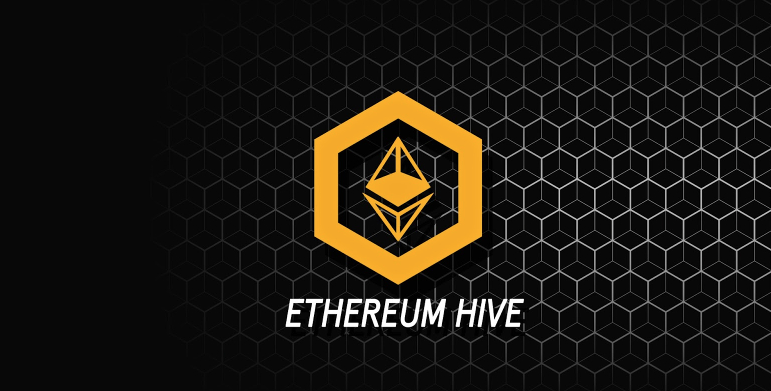V2 Updates and Listings are Underway
Following the release of Ethereum 2.0, eHive protocol, a community inspired experiment in DeFi Crowdsourcing built on the Ethereum Network, has successfully deployed 10 ETH 2.0 fully-operational validator nodes on the Beacon Chain. eHive intends to provide decentralized validation to every average market participant.
Ethereum Hive (eHive) is also excited to announce that the long-awaited eHive version 2 upgrade is almost complete. The V2 updates include a revised whitepaper (Whitepaper V2), a completely revamped website design (The Overhaul), and a lot more that is yet to be released.
Moreover, eHive has been listed on Indoex Digital Assets Exchange, and a number of listings on top 20 exchanges are on the way.
eHive Decentralized Validation
As the Ethereum Network migrated from the Proof of Work (PoW) model to the Proof of Stake (PoS) model, it altered the role of Miners with Validators in the verification of on-chain transactions. But the minimum funding required to operate a Validator is 32 ETH, which not every average user has. The main objective of eHive is to increase the accessibility of validation for the ordinary user and provide Ethereum’s smaller market participants a chance to share the rewards, by bringing crowdsourced validation. Whether a user has 0.01 ETH, 10 ETH, or 100 ETH, they may participate in the eHive protocol and earn rewards from the entire Validator Fleet using the $EHIVE token.
The Need for eHive Validation
The majority of DeFi and cryptocurrency users do not have a spare 32 ETH that they can lock up to run a Validator, which is the main reason Ethereum Hive was founded. Based on their current economies of scale, centralized companies provide staking to their users, but this has led to an oligopoly in the Ethereum Network’s validation and endangers the decentralization of the system as a whole. eHive seeks to concentrate its efforts on finding innovative solutions to validation in order to help the Ethereum Network preserve its status as a decentralized network. $EHIVE leverages crowdfunding through transaction fees to generate funds that will be used to host Validators for the entire $EHIVE community, so long as they are staked. This eliminates the strain on a single user to produce 32 ETH alone, and removes the headache of managing the required software components.
eHive Protocol and Ecosystem
eHive is designed with the long-term expansion of its validator network, called Validator Fleet, in mind. As the $EHIVE token trades on AMMs, 3% of all transactions will be allocated for the purchase of additional Validators. This ensures that the Validator Fleet will continue to grow as long as the $EHIVE token is traded on Decentralized Exchanges and its Centralized Exchange partners. Because the growth factor is independent of the rewards from the Validators, eHive will distribute all revenues without limiting its progress. Each additional Validator added to the Fleet raises the amount of Ethereum rewards available for holders.
Because EHive is aggressively investing in long-term growth, its native yield of 50% APR on $EHIVE will be used to fuel short-term gains.
The $EHIVE reward tokens are derived straight from the contract’s remaining supply. $EHIVE was created with half of the total supply minted and the other half to be “mined” by protocol participants. Only $EHIVE holders who have a stake in the primary Validator Pool will generate $EHIVE token emissions. The expected duration of these emissions, which range from 2 to 3 years, depends completely on the percentage of staked $EHIVE tokens.
The $EHIVE token achieves two primary goals through these emissions:
- Distributing the remaining $EHIVE supply between active users of the Protocol
- Supplementing Validator ETH rewards
Users will currently get a 50% APR (64.82% APY, compounded daily) return on their $EHIVE tokens from validators in the $EHIVE staking pools, and a 4-5% APR in $ETH (pending Validator uptime and attestations).
Alternative Validator Services (AVS) and Future Vision
Ethereum Hive believes that it has to be more than just a collection of crowdsourced Validators in order to have an influence on the decentralization of the Ethereum Network. This is why eHive intends to release Alternative Validator Services (AVS) in the upcoming months. AVS is a collection of several hosting Validator alternatives that will operate on the Ethereum Hive platform and directly support the development of $EHIVE.
Concepts included in the AVS will be:
- Multi-Token Validators
- NFT Fractionalized Validators
- Validator Hosting Services
Tokenomics
Token Name: Ethereum Hive
Token Ticker: $EHIVE
Network: Ethereum (ERC20)
Total Supply: 1,000,000,000,000 $EHIVE
- Initial Supply: (50%) 500,000,000,000 $EHIVE
- 2-3 Year Emissions: (50%) 500,000,000,000 $EHIVE
- Liquidity Tokens: (33%) 330,000,000,000 $EHIVE
- Presale Allocation: (15%) 150,000,000,000 $EHIVE
- Marketing: (2%) 20,000,000,000 $EHIVE
Liquidity Pairing: 330,000,000,000 $EHIVE + 8 ETH ($1635.60/ETH)
Presale Price: $0.000000109 (279.49% above initial launch)
Initial Price: $0.000000039
Initial Circulating Market Cap: $19,825.45
Current Market Cap: $5 Million
Contract: 0x4ae2cd1f5b8806a973953b76f9ce6d5fab9cdcfd
Taxation
$EHIVE has 6% tax on both Buy and Sell transactions, which is further divided in the following way:
- 3% Dedicated to Validator Funding
- 2% Allocated to Marketing
- 1% Injected into the Liquidity Pool
About eHive
eHive Protocol is a community-driven DeFi crowdsourcing project built on the Ethereum Network. Since validators will form the foundation of the new Ethereum Network, eHive and the development team believe that all cryptocurrency users, regardless of their holdings of 0.01 ETH or 32 ETH, should have the chance to take part in fostering the future of DeFi.
eHive intends to make validators and their income accessible to all holders, big and small, through the $EHIVE token and dashboard.
Website | Telegram | Twitter | Medium | CoinMarketCap | CoinGecko | DEXTools








